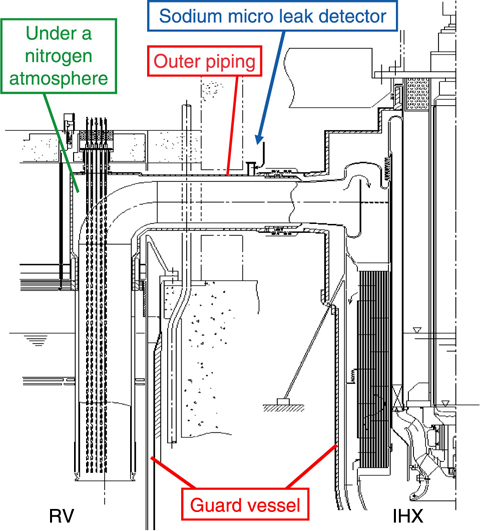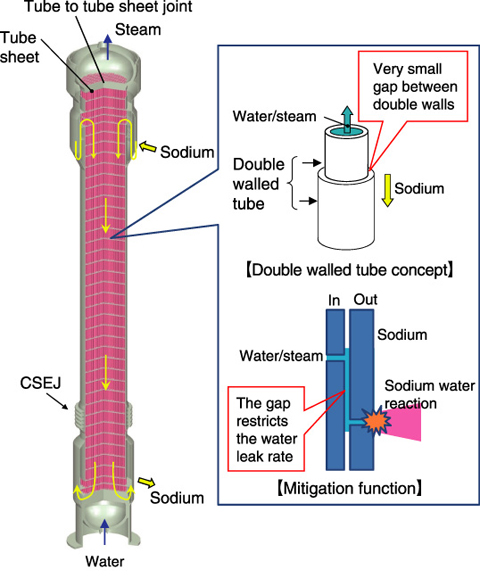
Fig.1-2 Schematic image of a reliable primary cooling system

Fig.1-3 Schematic image of reliable SG
In JSFR, we adopted sodium as a coolant because of its good heat transfer capacity properties. However, there is an issue with sodium in terms of its chemical activation, and thus we designed a reliable cooling system using a double wall for all sodium boundaries and sodium/water boundaries. Our design also includes preventing accident escalation by early detection of an emergency boundary failure.
Concerning the sodium boundary, we designed the primary cooling system to provide outer piping as shown in Fig.1-2, and the gap between the piping and the outer piping is under an inert gas atmosphere. Moreover, we designed the reactor vessel (RV) and internal heat exchanger (IHX) to provide a guard vessel to secure a sufficient level of sodium to cool the reactor core. We designed the secondary cooling system to provide an enclosure, and the gap between the piping and the enclosure is under an inert gas atmosphere. Due to these double wall boundary measures, JSFR can prevent thermal damage from the combustion of leaked sodium and chemical damage from the release of sodium aerosol. Moreover, JSFR can provide early stage detection of sodium piping failure by continuously monitoring for sodium micro leaks.
Concerning the sodium/water boundary, we designed a steam generator (SG) tube to eliminate sodium-water reactions by using a double wall tube as shown in Fig.1-3, and we also designed a means to prevent sodium-water reaction accidents by isolating a tube in which a defect is discovered during in-service inspection. Moreover, JSFR can provide early stage detection of tube failure by monitoring of water micro leaks.
To turn these innovative designs into accomplished facts, we are developing a sodium micro leak detector, and adopting Laser Induced Breakdown Spectroscopy (LIBS) as a promising technology to improve signal reliability and sensitivity. We found that the basic functionality of the LIBS technology is attainable. Moreover, we carried out trial fabrication of the double wall SG tube to improve the fablicability by adopting a simple cold drawing manufacturing process and optimized processing conditions. Cold drawing contributes to the reliability of the sodium/water boundary, preventing the penetration of defects by metallurgical separation. The fablicability of a 35 m SG tube is attainable. Moreover, we are developing a water micro leak detector, and adopting a hydrogen sensor as a promising technology to shorten leak detection time. By investigating measures to improve detection time, its basic functionality appears to be attainable.
In the future, we will particularize these design concepts, and determine the base specifications of the demonstration reactor. Moreover, we will advance the demonstration tests of the cooling system and components.
<Previous: 1 Research and Development of Advanced Nuclear System | Next: 1-2 >